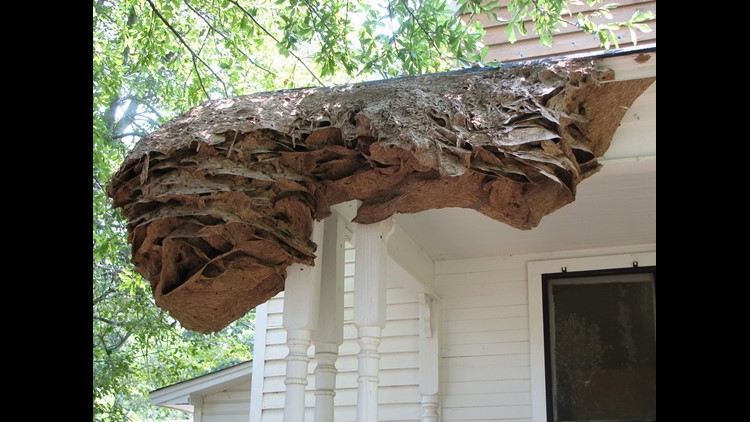Scientists issued a buzzworthy warning to Alabama residents: thousands of wasps are making the state home in what are called perennial yellow jacket nests. And they are freaky.
In 2006, a colony of 15,000 yellow jackets — the size of a Volkswagen Beetle — was one of 90 perennial nests located in Alabama that year. Entomologist Charles Ray said something like this may happen again in 2019.
Ray’s warning was published last month with the Alabama Cooperative Extension System, a primary outreach organization on behalf of Alabama A&M University and Auburn University. Ray is also a research fellow in Auburn University’s Department of Entomology and Plant Pathology.
“These perennial nests may be several feet wide and have many thousands of workers, far more than an average nest,” Ray said. “We have found them attached to home exteriors and other places you might not expect to find yellow jackets.”
Places like the side of a house, inside a discarded mattress, or even just on the ground in a field.
“The most workers I have counted in a perennial nest is about 15,000 or about 3 to 4 times more than a normal nest,” Ray said.
A normal yellow jacket nest can be in the ground or some type of cavity and peaks at 4,000 to 5,000 workers that don’t survive the winter. The queens disperse and form new colonies in the spring.
But entomologists believe that milder winters and an abundant food supply allow the wasp colonies to survive and enter spring with larger numbers. The normal cues that cause the queens to disperse don’t come — so these super nests often have multiple queens.
Two perennial nests were already found in May, with indications of a third, Ray said. This is several weeks earlier than when the first giant nest was spotted on June 13 in 2006.
“If we are seeing them a month sooner than we did in 2006, I am very concerned that there will be a large number of them in the state,” Ray said. “The nests I have seen this year already have more than 10,000 workers and are expanding rapidly.”
If homeowners suspect a perennial nest is on their property, they should not touch it.
“While these giant nests often appear less aggressive than smaller colonies,” Ray said. “It is important that people do not disturb the nests.”
Next, call a professional for help if the nest needs to be removed. It’s a task only for a licensed commercial pest control operator.



